
June's powerful new PC hardware: The dawn of a glorious future
 Image: Gordon Mah Ung
Image: Gordon Mah Ung
Staring into the future
In a year that’s already been flat-out fantastic for hot new PC hardware, June nevertheless managed to set a new high-water mark.
How could it not? This month brought the arrival of fresh chips from both Intel and AMD, the introduction of PCs you wear on your back (seriously), and the glorious rekindling of the graphics card war with a new generation of cutting-edge GPUs. Oh, and a couple major events called Computex and E3. You might have heard of them.
After years of iterative tweaks and minor evolution in the PC industry, this month truly felt like a glimpse at the future of computing. But enough dilly-dallying. Let’s get to the good stuff!
AMD Radeon RX 480

Image by Brad Chacos
The budding next-generation graphics card battle was the brightest highlight in June, spearheaded by the introduction of the Radeon RX 480, the first graphics card built around AMD’s new 14nm Polaris GPU. Power- and performance-wise, the RX 480 pretty much falls in between a GeForce GTX 970 and GTX 980. That’s a huge step forward in efficiency for AMD, and more importantly for the masses, the card starts at a mere $200 for a 4GB model.
That’s huge. The Radeon RX 480 delivers no-compromises gameplay with all the graphical bells and whistles enabled at 1080p resolution, damned fine 1440p performance on high graphics settings, and even entry-level virtual reality chops. Simply put, it redefines what’s possible with a $200 graphics card. And unlike Nvidia, AMD has no plans to kill 3- and 4-way Crossfire multi-GPU support.
AMD Radeon RX 460 and RX 470
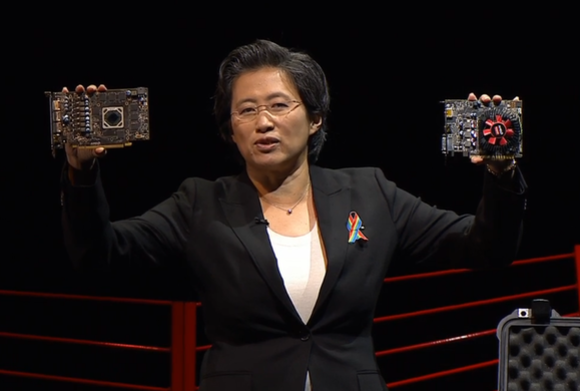
During the PC Gaming Show at E3, AMD CEO Lisa Su also teased the RX 480’s lower-priced cousins, the RX 460 and RX 470. The RX 470 is billed as a “refined, power-efficient” card for 1080p gaming, while the RX 460’s being heralded as “a cool and efficient solution for the ultimate e-sports gaming experience.”
Unfortunately, nothing more was revealed beyond that. No pricing info, no release dates, no performance comparisons, nothing. But AMD’s clearly going for the mainstream and market share with its first salvo in the next-gen graphics card battle.
Nvidia GTX 1070, GTX 1080 custom cards
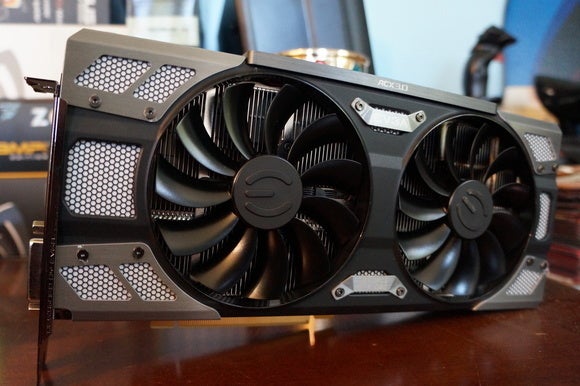
Image by Brad Chacos
Nvidia wasn’t sitting idle while AMD debuted its new crowd-pleasers, however. On June 10, the GeForce GTX 1070 hit the streets, delivering Titan X-beating performance for a mere $380. That’s a hell of a discount for what was the pinnacle of PC graphics power just a few months back.
But the graphics card world has a new champion: The GeForce GTX 1080. After the $700 GTX 1080’s Founders Edition launched in late May, June saw custom variants with beefy coolers and hefty out-of-the-box overclocks make their debut. Case in point: the ferocious $680 EVGA GTX 1080 FTW (pictured), which makes the most powerful GPU in the world more badass for even less money than the Founders Edition. This thing will melt your face.
Intel Core i7-6950X
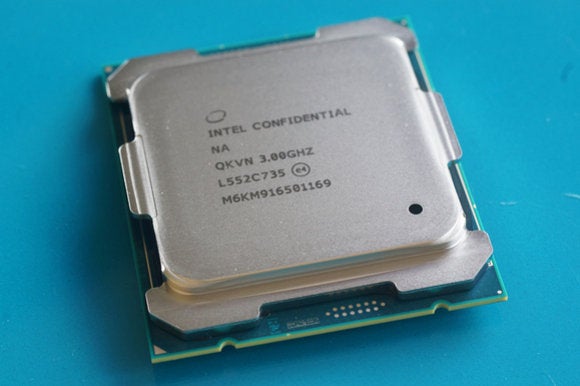
Image by Gordon Mah Ung
Speaking of face-melting, Intel rolled out a new champion of its own in very late May: The Core i7-6950X Extreme Edition processor, the first-ever 10-core enthusiast CPU. This beast is built not just for multi-tasking but “mega-tasking,” as Intel’s PR machine tells it, and it crushes multi-core benchmarks with a vengeance. There’s nothing else like it that’s built for consumers—and nothing else like its price tag. The Core i7-6950X will set you back a cool $1,723, and that’s in bulk lots of a thousand chips. Street prices are $25 to $50 higher.
Too rich for your blood? That wasn’t the only new Extreme Edition CPU Intel introduced. Check out PCWorld’s guide to the 10 things you need to know about Broadwell-E for the full scoop on the entire lineup.
Intel Core i7-6950X
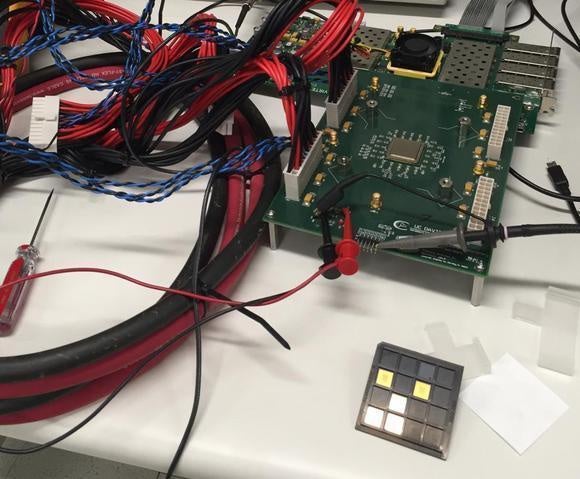
Image by Gordon Mah Ung
Pffft: 10-core chips are so early June. In late June, researchers at University of California Davis revealed Kilocore , a monstrous 1,000 core CPU that’s 100 times more power-efficient than today’s laptops. Get this: It could theoretically be powered by a AA battery because each of those cores can run independently at different clock speeds, or shut off completely.
Before you get too excited, remember that this was created in a lab and isn’t anywhere near production ready. The underlying principles could pay dividends in the future, however, especially in mobile devices.
AMD Bristol Ridge and Stoney Ridge
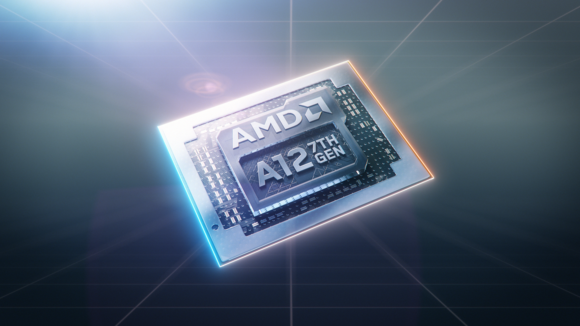
During Computex, AMD revealed a more attainable series of chips: Its new Bristol Ridge and Stoney Ridge APUs. APUs combine AMD CPU cores and Radeon graphics cores on a single chip to deliver basic gaming and video capabilities without the need for a discrete graphics card.
Both Bristol Ridge and Stoney Ridge APUs pack AMD’s Excavator core, which will be paired with AMD’s Radeon R7 graphics cores on the FX and A12 lines; AMD’s R5 graphics on the A10 and A9 lines; and R4 and R2 graphics on the low-end A6 and E2 series, respectively. Every single one sips either 15 or 35 watts of power.
Expect them to appear in everything from budget notebooks to premium laptops over the coming months.
Samsung’s stamp-sized SSD
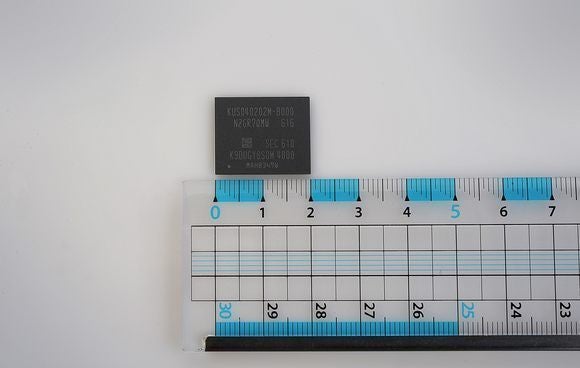
The name of Samsung’s new PM971-NVMe might not stick in your brain, but its capabilities will. This 1-gram, 20mm x 16mm x 1.5mm chip packs up to 512GB of NAND flash, a controller, and RAM—meaning it’s a full-blown SSD that will fit on the tip of your finger.
SSDs for traditional PCs will still use traditional form factors, no doubt, but this tiny chip can be slapped on a standard M.2 card and then be slapped inside super-slim laptops, tablets, and laptop-tablet convertibles.
The chip’s small size doesn’t mean it’ll be slow. Samsungs says the PM971-NVMe will hit 1.5GBps read speeds and 800MBps write speeds. Hot damn.
Digital Storm Aura
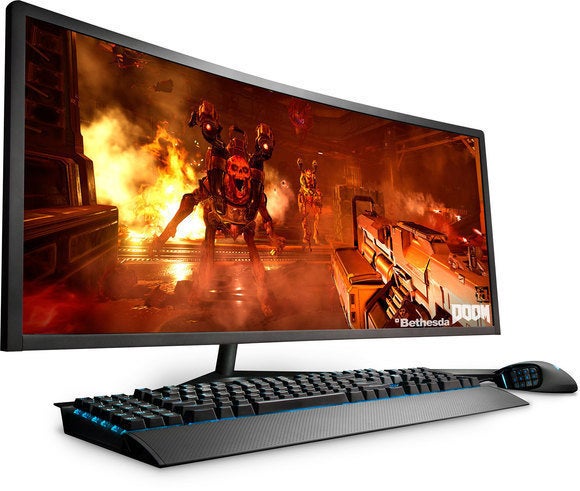
PCs packing all this powerful new gear are already hitting the market, and reimagining what’s possible with age-old form factors in the process. All-in-one PCs have traditionally been hobbled by mobile components due to their compact form factor, for example—but not Digital Storm’s beastly Aura.
The Aura is a gaming-ready all-in-one with a curved, 34-inch 3440×1440 resolution ultrawide display, and up to the 10-core Core i7-6950X, GeForce GTX 1080, and 16GB or more of RAM. You read that right. This is an all-in-one with no compromises. And yes, it can play Crysis.
Backpack PCs
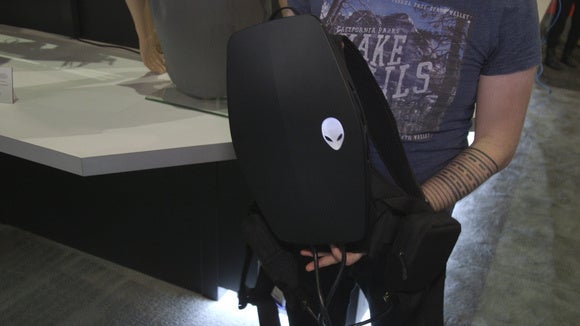
The rethinking of PC form factors is best exemplified by a completely new one that exploded out of nowhere in June. Alienware (pictured), HP, Zotac, and MSI were all showing off backpack PCs throughout Computex and E3.
Before you shake your head, there’s actually a valid reason to create PCs that you wear on your back: virtual reality. Both the Oculus Rift and the HTC Vive tether you to your PC, even though the latter ostensibly allows you to wander around a 15×15-foot space. Backpack PCs keep those cords from tripping you up or tugging at the back of your head while you wander around. It’s a novel solution, but one that honestly feels like a stopgap until more robust wireless audiovisual technologies hit the market.
Razer OSVR HDK2
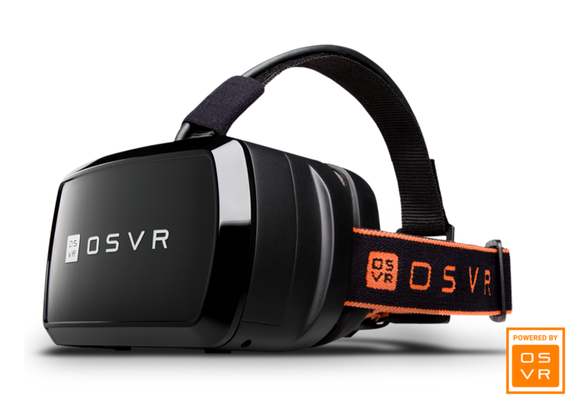
The Oculus Rift and HTC Vive aren’t the only VR headsets in town. At E3, Razer revealed the second-generation Hacker Development Kit headset, a.k.a. the avatar for its open-source VR endeavors. And get this: On paper, the HDK2 rocks with the same basic specs as the $600 consumer Oculus Rift, but for only $400. Journalists who tried the headset (like Tested’s Norm Chan) say that the image quality isn’t quite up to par with the Rift or Vive, however.
Asus water-cooled laptop
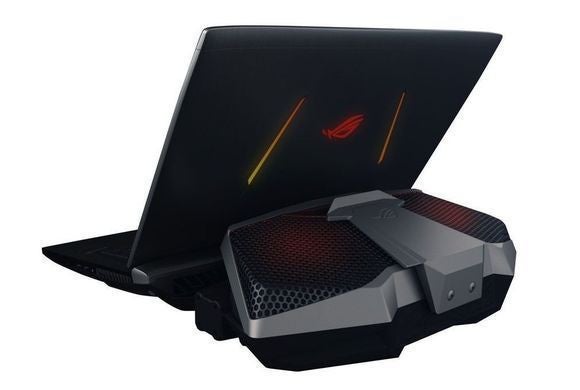
The train of powerful new tech continues with the Asus ROG GX800, the company’s second-generation water-cooled gaming laptop. Read that again: a water-cooled gaming laptop. Then read our primer on how Asus makes it happen.
Technically, it’s a normal gaming laptop that can slide into a water-cooling dock and overclock for even more ferocious performance. As if that weren’t desktop-like enough, the GX800 will rock “Intel K-series CPUs” clocked at 4.4GHz and memory clocked at 3.8GHz, along with an unnamed mobile GPU that will give it more power than the legendary Titan X. (It has to be a mobile GTX 1070 chip.) All that power takes an awful lot of energy, though: The Asus GX800 packs not one, but two 330-watt power supplies in order to supply enough juice for all that gaming goodness.
Asus Avalon concept PC
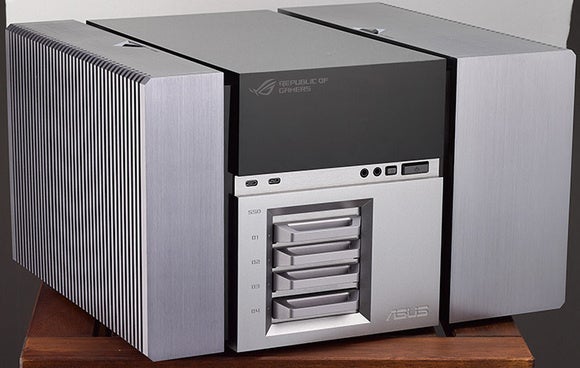
Asus shook all sort of things up in June. The radical Avalon concept PC is even wilder than the GX800, with a design that tightly integrates all aspects of the PC for a more refined hi-fi-like aesthetic, but still supports the platform’s DIY strengths. Rather than try to try to explain it here, just hit that link and check it out.
Asus Avalon motherboard
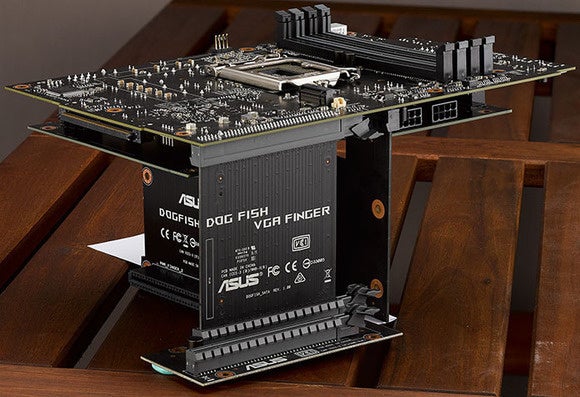
Seriously, go check out the Asus Avalon PC article. This is its motherboard with a couple of daughter boards attached!
Alienware Alpha
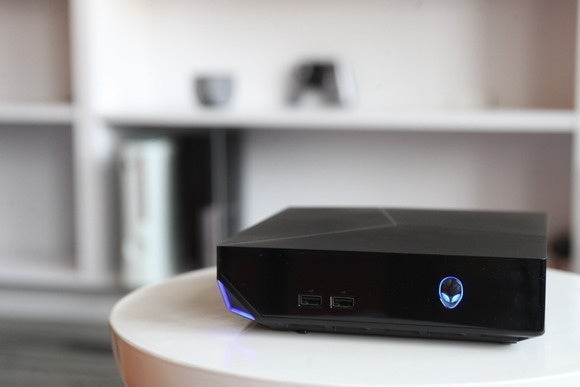
Image by Gordon Mah Ung
Steam Machines might not be selling like hotcakes, but the dream of tiny living-room-ready gaming PCs isn’t dead. At E3, Alienware revealed an updated version of its diminutive Alpha PC console, with DDR4 RAM, faster Skylake processors, and newer graphics options. The original Alpha was surprisingly decent, so this is one welcome refresh.
And Alienware’s not just sticking to Windows. The company also revamped the Steam Machine variant of the Alpha.
Overwatch PC mod
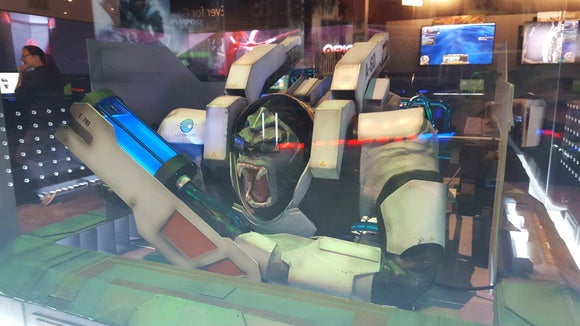
Image by Hayden Dingman
At E3 we saw a tricked-out, water-cooled gaming PC that looks like an angry sci-fi gorilla. If that’s not the future, I don’t know what is.
This crazy “Winston from Overwatch” mod was dreamed up and brought to life by Blue Horse Studios and PCJunkieMods for Microsoft’s booth.
Corsair’s brain-bending rigs
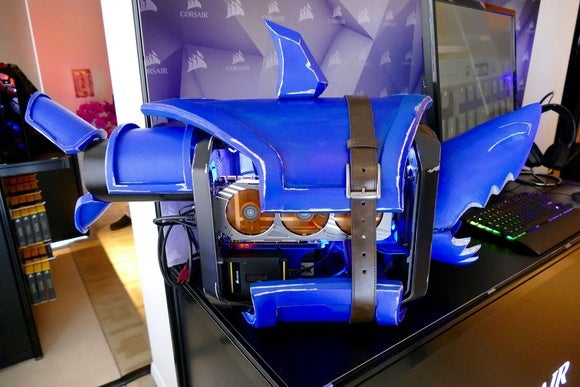
Image by James Niccolai
That’s it for our wrap-up of this month’s PC highlights. Still in the hardware mood? Check out our look at the wild mods and crazy rigs that Corsair dragged along to Computex. Glowing mag-lev fans and PCs that look like sharks are just the beginning.